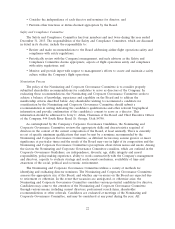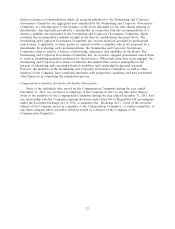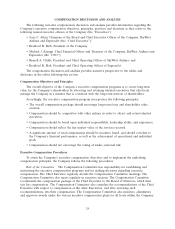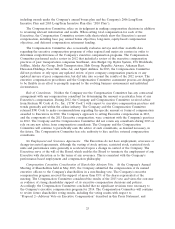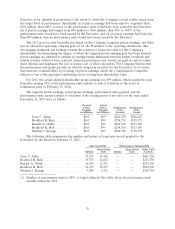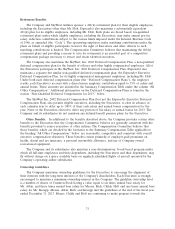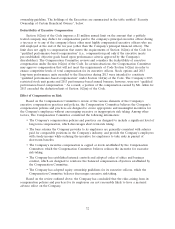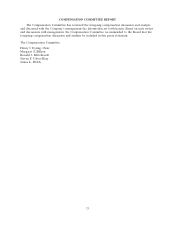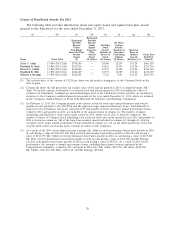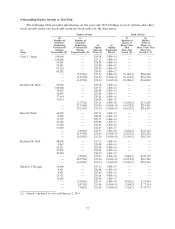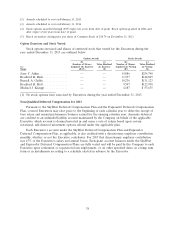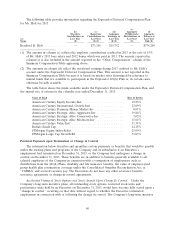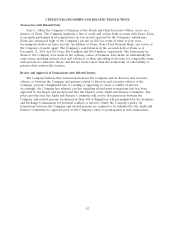SkyWest Airlines 2013 Annual Report Download - page 146
Download and view the complete annual report
Please find page 146 of the 2013 SkyWest Airlines annual report below. You can navigate through the pages in the report by either clicking on the pages listed below, or by using the keyword search tool below to find specific information within the annual report.ownership guideline. The holdings of the Executives are summarized in the table entitled ‘‘Security
Ownership of Certain Beneficial Owners’’, below.
Deductibility of Executive Compensation
Section 162(m) of the Code imposes a $1 million annual limit on the amount that a publicly
traded company may deduct for compensation paid to the company’s principal executive officer during
a tax year or to any of the company’s three other most highly compensated executive officers who are
still employed at the end of the tax year (other than the Company’s principal financial officer). The
limit does not apply to compensation that meets the requirements of Section 162(m) of the Code for
‘‘qualified performance-based compensation’’ (i.e., compensation paid only if the executive meets
pre-established, objective goals based upon performance criteria approved by the Company’s
shareholders). The Compensation Committee reviews and considers the deductibility of executive
compensation under Section 162(m) of the Code. In certain situations, the Compensation Committee
may approve compensation that will not meet the requirements of Code Section 162(m) in order to
ensure competitive levels of total compensation for its executive officers. Stock options and 2013
long-term performance units awarded to the Executives during 2013 were intended to constitute
‘‘qualified performance-based compensation’’ under Section 162(m) of the Code. The Company’s 2013
restricted stock unit grants and 2013 performance-based annual bonuses, however, were not ‘‘qualified
performance-based compensation.’’ As a result, a portion of the compensation earned by Mr. Atkin for
2013 exceeded the deduction limit of Section 162(m) of the Code.
Effect of Compensation on Risk
Based on the Compensation Committee’s review of the various elements of the Company’s
executive compensation practices and policies, the Compensation Committee believes the Company’s
compensation policies and practices are designed to create appropriate and meaningful incentives for
the Company’s employees without encouraging excessive or inappropriate risk taking. Among other
factors, The Compensation Committee considered the following information:
• The Company’s compensation policies and practices are designed to include a significant level of
long-term compensation, which discourages short-term risk taking.
• The base salaries the Company provides to its employees are generally consistent with salaries
paid for comparable positions in the Company’s industry, and provide the Company’s employees
with steady income while reducing the incentive for employees to take risks in pursuit of
short-term benefits.
• The Company’s incentive compensation is capped at levels established by the Compensation
Committee, which the Compensation Committee believes reduces the incentive for excessive
risk-taking.
• The Company has established internal controls and adopted codes of ethics and business
conduct, which are designed to reinforce the balanced compensation objectives established by
the Compensation Committee.
• The Company has adopted equity ownership guidelines for its executive officers, which the
Compensation Committee believes discourages excessive risk-taking.
Based on the review outlined above, the Company has concluded that the risks arising from its
compensation policies and practices for its employees are not reasonably likely to have a material
adverse effect on the Company.
32


